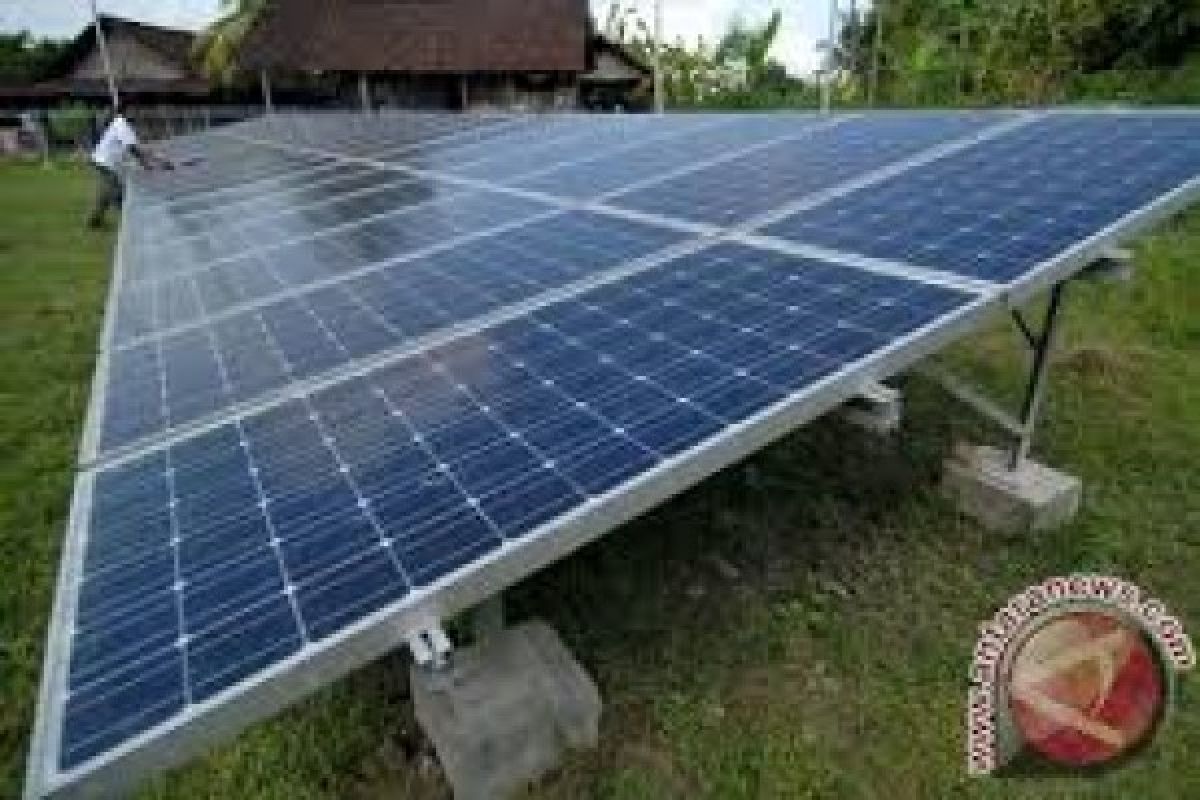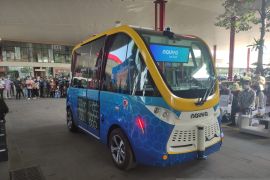The government is also doing its best to achieve its target of developing 35 thousand megawatts (MW) of electricity."Jakarta (ANTARA News) - Indonesia is determined to reduce its use of conventional fossil fuels and continues to promote new and renewable sources of energy and increase share of renewables in its energy mix to 23 percent by 2025.
According to Minister of Energy and Mineral Resources (ESDM) Ignasius Jonan, the government is poised to achieve its target of increasing the share of renewables in its energy mix use by 23 percent for electricity and transportation in 2025.
"Indonesia is resolved to increasing its energy mix to 23 percent in 2025 in line with its commitment to reducing its greenhouse gas emissions it had made during the COP 21 conference in Paris in 2015," Jonan stated on Wednesday (Jan 25).
Indonesia has planned to reduce its emissions by 26 percent by 2020 and 29 percent by 2030.
To achieve this target, Research, Technology and High Education Ministry (Kemristekdikti) has been urged to encourage research and development on new and renewable forms of energy in a bid to support the governments efforts to achieve the 23 percent energy mix target by 2025.
"The government is also doing its best to achieve its target of developing 35 thousand megawatts (MW) of electricity. In this case, the Kemristekdikti is tasked with encouraging research and development in the field of new energy technology, so that the 23 percent target would be achieved," Research, Technology and High Education Minister M. Nasir noted in Jakarta on Monday (Jan 9).
Moreover, the governments energy mix target has, so far, not been achieved, as in 2015, it had reached only five percent, and in 2016, it was seven percent. Hence, the Kemristekdikti has been entrusted the responsibility of encouraging its research and development center to conduct further studies on Geothermal Electricity Generator technology.
Besides this, the second new energy technology to be developed to support the 23 percent energy mix target is to encourage the development of solar power plants. The problem is not only about how to produce solar cells but also how to store its energy.
The ministry will develop ways to source electricity produced by energy cells in residential areas through an on-grid system of the state-owned electricity company PLN, so that houses can buy it again during night time.
This system is used to avoid the expensive off-grid storage system, where solar cells require a battery to store energy.
Nasir further shed light on the development of power generators that harness the energy of sea waves. This will be developed in Adonara, East Nusa Tenggara, in cooperation with the Netherlands and in Maluku in cooperation with Germany.
"We will conduct joint studies with them there. If we can already develop the technology, then the cooperation will be carried out with the Agency for Assessment and Application of Technology (BPPT). We will try to produce turbines," Minister Nasir noted.
The main goal of encouraging research on renewable energy technology is to increase the local components used in producing geothermal power generators. So far, the local components have reached 64.5 percent. This percentage will continue to be increased through research and development activities. Thus, more renewable energy will be produced, and the 23 percent energy mix target can be achieved.
ESDM Minister Jonan believed that the use of diverse sources of energy should continue to be promoted to support the development of electricity and transportation, though the prices should be within the purchasing power of the people.
The purchasing power of the people will remain the main focus of the government in the electricity sector. The minister lauded PLNs efforts to offer electricity at economical rates. However, one needs to understand that not all forms of basic energy can be used or produced efficiently in all locations.
Solar or wind energy can be used by steam power plants in South Sumatra, for instance, as long as they are able to generate electricity at competitive costs.
Hence, Minister Jonan emphasized that it was not necessary to offer incentives to businesses engaged in the development and use of new and renewable energy.
"I think friends doing business in the new and renewable energy sector do not need incentives. What they need is support, which will, in the end, make them efficient," he affirmed.
In the meantime, the Indonesian government plans to apply a new scheme to set the tariffs of electrical power generated by new and renewable energy power plants.
The government is making every effort to make the tariffs transparent, accountable, and measurable, member of the National Energy Council Tumiran stated at a press conference in Jakarta on Monday (Jan 23).
The government is offering room to ensure that the tariffs on electricity generated by new and renewable energy power plants in all regions will not be the same but will instead be adjusted to the existing potential, so that they will help supply energy in the regions.
Through the new scheme, the prices of electrical power generated by new and renewable energy power plants will differ across regions, as a maximum of 85 percent of the prices must be the regional production cost.
Citing an example, he explained that if the production cost of electrical power in the eastern part of Indonesia is Rp2.5 thousand per kilowatt-hour (kWh), then the price of electrical power from new and renewable energy power plants will be 85 percent of Rp2.5 thousand, or Rp2.1 thousand per kWh.
This should especially be applicable in Java, which has low production cost. The national production cost, which stood at Rp980 per kWh last year, will be applied in the island, he stated.
The move is intended to enable investors in the renewable energy sector to keep down the prices and to make the investment cost cheaper," he added
(T.A014/INE/KR-BSR/F001)
Reporter: Andi Abdussalam
Editor: Priyambodo RH
Copyright © ANTARA 2017












